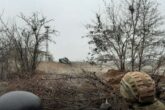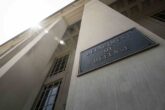December 19, 2017
What Does a Government Shutdown Mean for the Department of Defense?
What happens to the Defense Department when the federal government shuts down? I can shed some light on this; in October 2013, I was a DoD civilian charged with helping to ensure an orderly shutdown for the Office of the Under Secretary of Defense for Policy.
On Dec. 22, the current continuing resolution will expire. If lawmakers have been unable to reach agreement on an appropriations bill, or pass a third CR for fiscal 2018, appropriations will lapse. By this time, Defense Department planners have long since begun planning — which means the harms to military readiness, service members, DoD civilians, and contractors have already begun.
The planning alone is harmful, absorbing hours of management and senior leaders’ time better spent elsewhere, and damaging morale in the workforce. Based on guidance from the Office of Personnel Management, or OPM, leaders must determine what activities can continue during a government shutdown and what personnel are excepted from shutdown furlough. Making these determinations is more complicated than it seems. Many must be made case-by-case, which is time-consuming and distracting from the Department’s primary missions.
Funding the government is Congress’s most basic Article I function. When they fail to do so, the entire nation looks absurdly ineffective.
First, shutdowns only apply to things funded through appropriations from Congress. Activities and employees paid for by non-appropriated funds do not shut down. These employees are referred to as “exempt” because the shutdown does not apply to them. For example, the Defense Security Cooperation Agency, or DSCA, generates some revenue through administrative fees charged to foreign governments in support of foreign military sales cases; these are non-appropriated funds. Some of DSCA’s employees’ salaries are paid out of these non-appropriated funds; as a result, they are exempt from shutdown. Other DSCAemployees are paid through appropriated funds, and are thus subject to shutdown furloughs.
Read the full commentary in Defense One.
More from CNAS
-
Defense / Transatlantic Security
When Defense Becomes Destruction: Austria-Hungary’s Mistake and Ukraine’s RiskThis article was originally posted on War on the Rocks. The southeastern Polish city of Przemyśl, with its elegant 19th century Habsburg-era train station, remains one of the ...
By Franz-Stefan Gady
-
Defense / Transatlantic Security
Ukraine’s Catch-22 MomentThis article was originally published in the Financial Times. In Joseph Heller’s wartime classic, Catch-22, the protagonist Yossarian seeks out the US army surgeon Doc Daneeka...
By Franz-Stefan Gady
-
CNAS Insights | Budgetary Own Goals Undermine “Speed and Volume”
On November 7, Secretary of Defense Pete Hegseth laid out a plan to overhaul the Department of Defense’s (DOD’s) acquisition system. Placing an emphasis on delivering new capa...
By Philip Sheers, Carlton Haelig & Stacie Pettyjohn
-
Drones: Who Is Making the New Weapons of War?
From Ukraine and Russia to Gaza and Sudan, drones have become a key weapon of war. Which companies are making them, and profiting from this rapidly expanding but controversial...
By Stacie Pettyjohn




